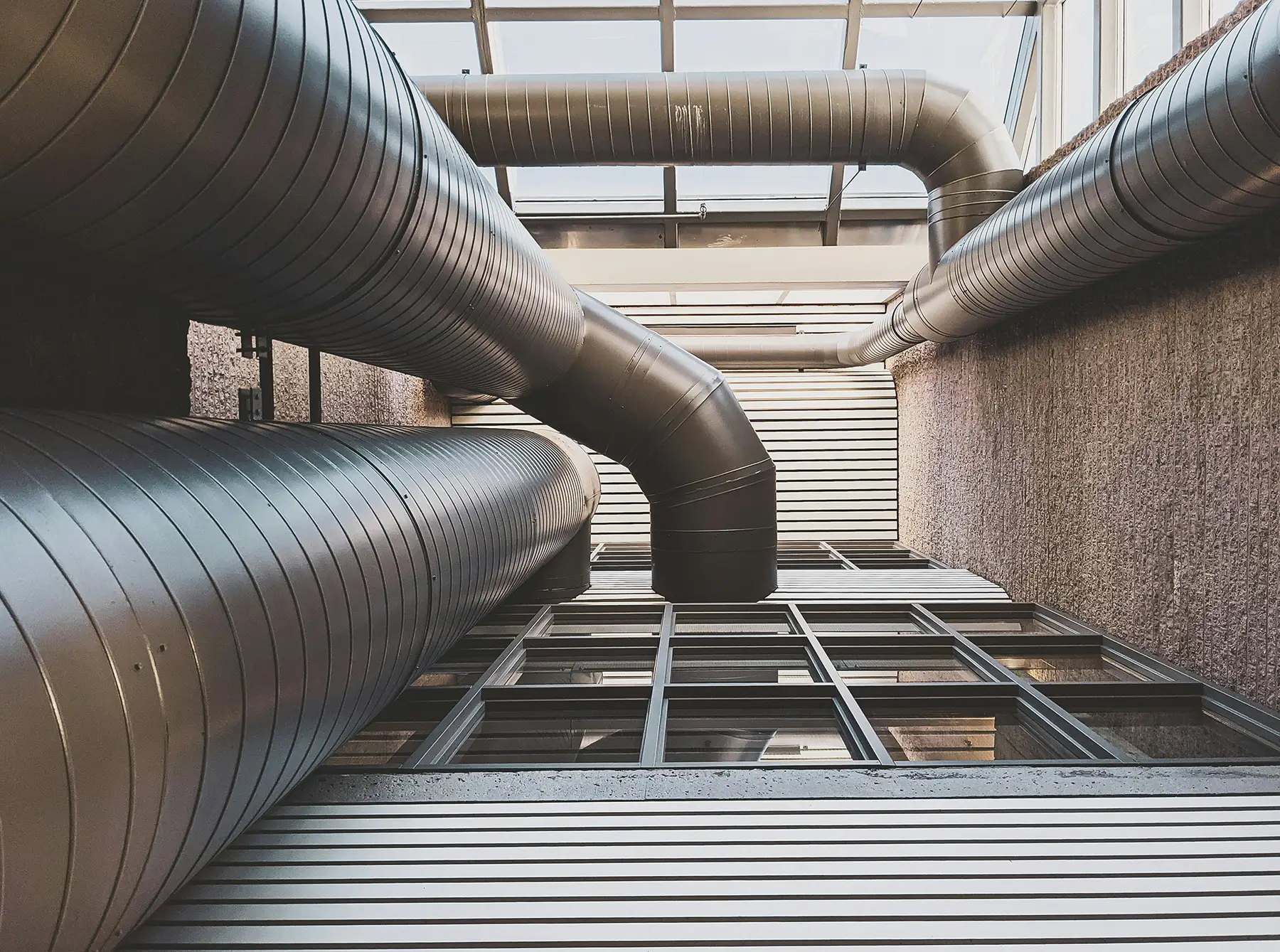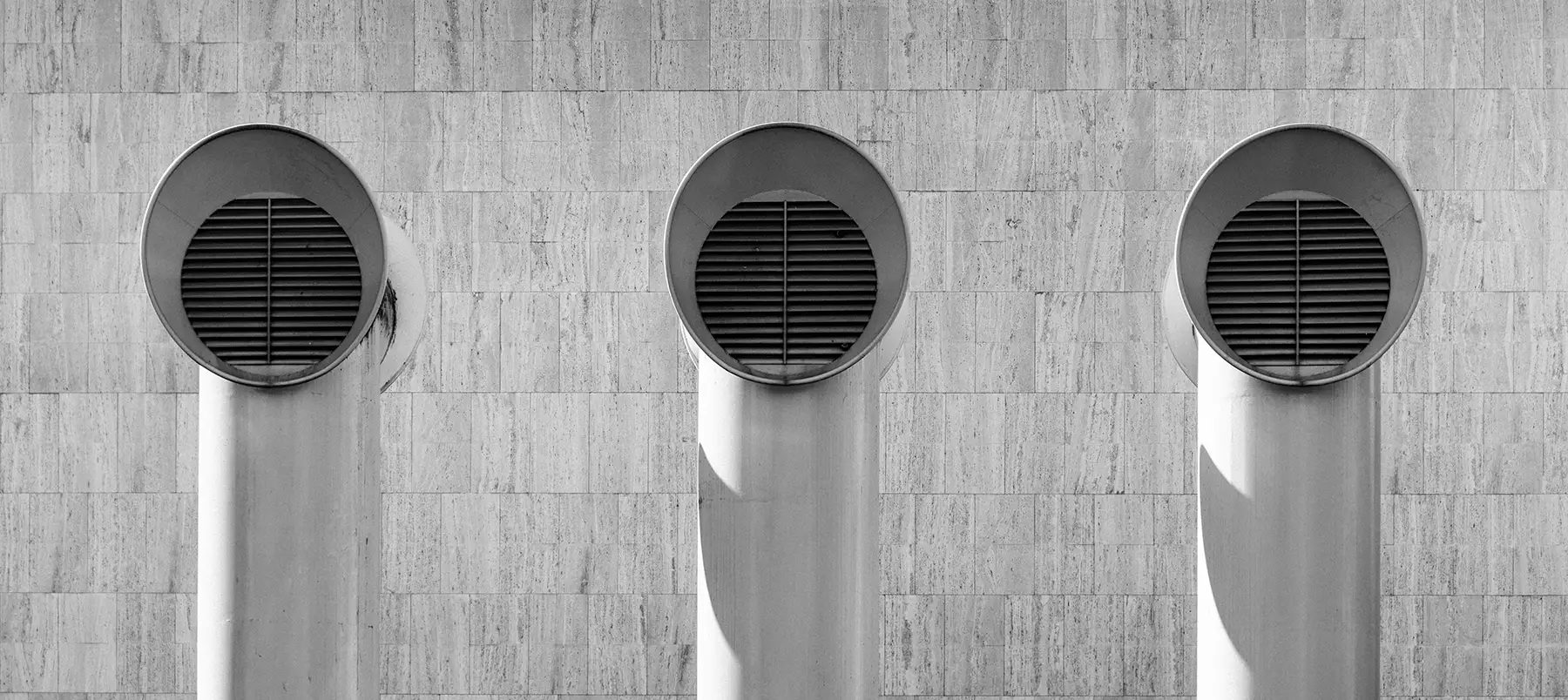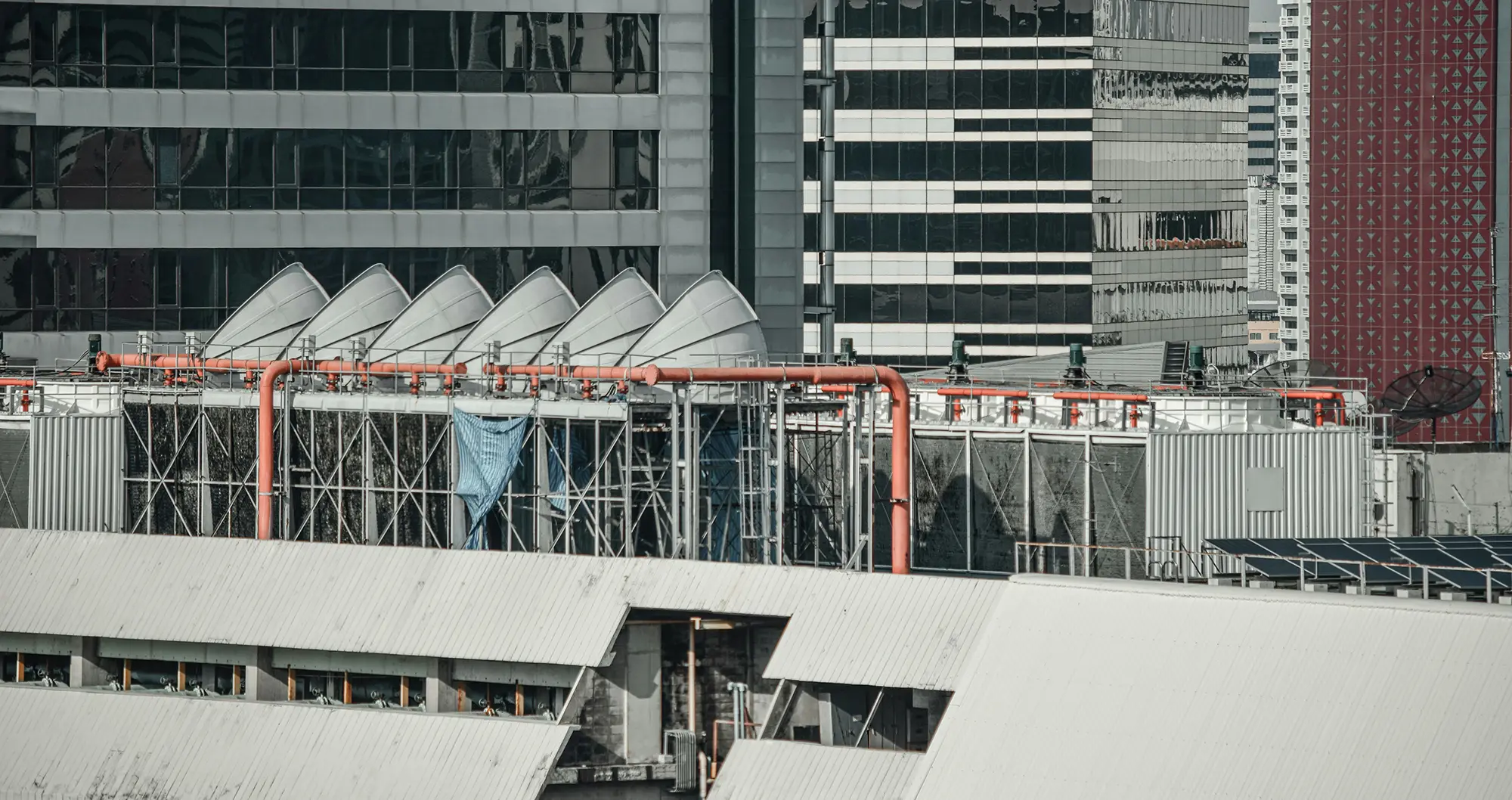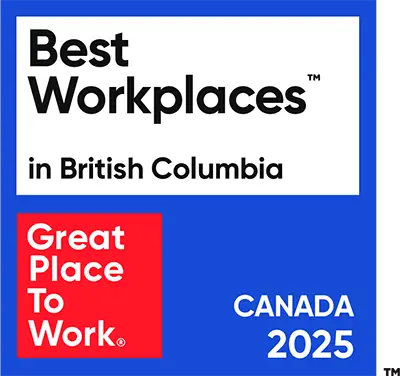HVAC-R Trends for 2025: Innovation Meets Regulation in Canada.
The rapid evolution of HVAC-R trends in 2025 is compelling commercial HVAC-R companies to transform nearly every aspect of their business. The shift toward innovative systems, energy efficiency, and regulatory compliance—especially with Canada’s updated refrigerant and efficiency rules—means that relying solely on traditional know-how is no longer sufficient. Let’s examine the emerging HVAC-R Trends for 2025 and how commercial HVAC-R contractors can stay ahead in the changing times.

HVAC-R Trends for 2025 – Smart Systems.
The “smart home” era has fully arrived for HVAC-R. Modern systems now feature smart thermostats with Wi-Fi connectivity, advanced sensors, and integration with voice-activated assistants (like Alexa or Google Home). These thermostats don’t just respond to manual inputs—they learn your routines, adjusting settings to save energy when you’re away or asleep. They can also react to real-time weather forecasts, pre-heating or pre-cooling your home for maximum comfort and efficiency. Likewise, homeowners can monitor and adjust their climate remotely via mobile apps—a popular feature for busy Canadians and cottage owners. Predictive maintenance alerts, enabled by artificial intelligence (AI), identify potential issues before they lead to breakdowns, thereby reducing downtime and repair costs. In 2025, these systems will no longer be luxury add-ons, but will be widely expected in both new builds and retrofits, setting contractors apart in a competitive market.
HVAC-R Trends for 2025 – Indoor Air Quality Upgrades.
Health and wellness are at the forefront for Canadian families, especially in the wake of recent global health concerns. In 2025, demand is soaring for upgrades that improve indoor air quality. High-Efficiency Particulate Air (HEPA) filtration, UV-C air purification, and whole-home air purification systems have become the new standard. Innovations like Energy Recovery Ventilators (ERVs) and Heat Recovery Ventilators (HRVs) simultaneously freshen the air and recover energy, boosting both comfort and efficiency. These solutions target allergens, bacteria, viruses, and volatile organic compounds (VOCs), providing safer, cleaner air for sensitive populations. New builds—especially in urban areas—are increasingly required to incorporate IAQ technologies for regulatory compliance and market competitiveness.

HVAC-R Trends for 2025 – Energy Efficiency
With energy costs rising and climate action at the forefront, HVAC-R energy efficiency is no longer an optional consideration. Canadians are increasingly adopting air-source and ground-source heat pumps, which provide both heating and cooling at a fraction of the energy consumption of traditional heating and cooling systems. New ductless mini-split systems offer zoned comfort (heating/cooling only where needed) with reduced energy waste, especially effective for homes without existing ductwork. Federal and provincial programs (like the Canada Greener Homes Grant, offering rebates for energy-efficient retrofits) incentivise these upgrades. Technologies such as variable-speed compressors and motors, along with improved system controls, further enhance energy savings. Mandatory minimum efficiency ratings have been updated for 2025. For instance, Natural Resources Canada (NRCan) now requires central air conditioners to have a minimum SEER of 14 and air-source heat pumps to reach a minimum SEER of 15.
HVAC-R Trends for 2025 – Refrigerant Changes.
One of the most sweeping regulatory changes for 2025 is Canada’s transition away from high Global Warming Potential (GWP) refrigerants. Following the Kigali Amendment to the Montreal Protocol, Canada is phasing out R-410A and other hydrofluorocarbons (HFCs), requiring new systems to use climate-friendly alternatives, such as R-32 or R-454B. Starting January 1, 2025:
- Production and import of new R-410A equipment is banned
- New installations must use low-GWP, A2L-class refrigerants
- Technicians must be trained in proper handling and safety for these mildly flammable alternatives
This transition not only affects environmental impact but also requires significant retraining and education for installers and service professionals. Homeowners and contractors need to ensure their new or replacement systems are compliant to avoid costly replacements or legal issues.
“As a mechanical services company, our job isn’t just to keep up—it’s to stay ahead. Every project is a chance to apply the latest technologies and smarter processes, delivering solutions that are innovative, cost-efficient, and built to last. Our clients trust us because we solve today’s challenges with tomorrow’s thinking.” Brad Hedblom – CEO True Mechanical.
HVAC-R Trends for 2025 – Sustainability
Among the HVAC-R Trends for 2025 is sustainability – which is no longer a buzzword; it’s a business necessity. Canadian policies and incentives are promoting the adoption of technologies such as high-SEER (Seasonal Energy Efficiency Ratio) systems, solar-integrated HVAC-R, and geothermal solutions. Energy-efficient HVAC-R products significantly reduce greenhouse gas emissions. The Canada Greener Homes Grant and provincial rebate programs reward homeowners who leap, driving broader uptake. Even in the construction process, eco-conscious materials and building techniques—such as better insulation and air sealing—are becoming mainstream. The 2025 regulatory environment is aligned to cut national GHG emissions, so expect sustainability to be a competitive differentiator for years to come.
HVAC-R Trends for 2025 – Ongoing Education and Personalisation
Rapid-fire changes in regulations and technology present considerable challenges for contractors, but also significant opportunities for those who invest in knowledge and service. With new refrigerants, stricter installation codes, and evolving energy efficiency standards, ongoing education is a must for anyone working in the Canadian HVAC-R sector. Leading distributors now offer streamlined training and certification for low-GWP refrigerants, as well as innovative system installations. Personalising recommendations for clients—whether optimising comfort, improving IAQ, or maximising rebates—helps contractors build lasting relationships and grow their business in a crowded marketplace.

How Commercial HVAC-R Contractors Can Stay Ahead of HVAC-R Trends for 2025.
To stay ahead, commercial HVAC-R providers now require dedicated innovation, research and development (R&D) functions. These teams are crucial for maintaining pace with technological advancements, rapidly evaluating new product lines, and ensuring the company’s service portfolio meets the increasing demands of the market and regulations. Robust R&D also facilitates piloting new solutions (such as advanced controls or heat pumps), preparing companies to offer informed, proven recommendations rather than simply reacting to trends.
Equally important is the ability to educate clients proactively. Today’s commercial building owners and facility managers are increasingly aware of the HVAC-R landscape. Still, they may not fully grasp the cost-benefit profile of new intelligent systems, IAQ solutions, or energy rebates. HVAC-R firms must invest in client education—delivering seminars, publishing case studies, or providing one-on-one consultancy—to help clients understand not only what’s possible, but why these investments make sense from both operational and compliance perspectives. This educational approach fosters trust, clarifies value, and often leads to larger, longer-term contracts.
Supply chain partnerships are also taking centre stage. The need for low-GWP refrigerants, smart controls, and systems that meet SEER, IAQ, and policy benchmarks means commercial HVAC-R companies must carefully curate their vendor networks. Choosing suppliers with demonstrated policy compliance and strong support infrastructure ensures fewer project delays and a longer-term competitive edge. These partnerships also enable HVAC-R professionals to leverage the latest product innovations and stay current as Canada’s regulatory landscape continues to evolve.
Perhaps the most challenging aspect is striking the right balance between budget constraints, system efficiency, and stringent policy requirements. Commercial clients remain cost-conscious, yet the pressure to reduce operational carbon footprints and avoid regulatory penalties is stronger than ever. Forward-thinking HVAC-R companies stand out by developing flexible proposals that offer a tiered array of solutions, factoring in rebate opportunities, long-term utility savings, and futureproofing against upcoming codes. A transparent approach to balancing short-term budget concerns with long-term value and compliance helps close deals and build credibility.
Lastly, research highlights the growing importance of workforce training and retention. To stay ahead of HVAC-R Trends for 2025, technicians must continually update their certifications (especially for refrigerant handling and smart tech installation), while companies must create career paths that keep employees engaged and informed. Investing in both people and processes is emerging as a defining trait of the most successful and adaptive commercial HVAC-R firms in 2025.
Contact us today to learn more about our services or to explore a rewarding career in mechanical contracting. The future is mechanical—let’s build it together.
What is HVAC-R?
HVAC-R stands for Heating, Ventilation, Air Conditioning, and Refrigeration. It’s the industry shorthand for the full suite of mechanical systems that keep buildings comfortable and functional. In practice, HVAC-R encompasses everything from the fan coil unit in your condo to the massive chillers and boilers on a high-rise roof, as well as the refrigeration racks in a supermarket. It’s the backbone of modern building comfort and performance.
- Heating – Boilers, furnaces, or heat pumps that provide warmth in colder months.
- Ventilation – Moving and filtering air to maintain indoor air quality.
- Air Conditioning – Cooling and dehumidifying spaces for comfort.
- Refrigeration – Specialised cooling systems for food storage, labs, data centres, and other processes that need controlled temperatures.

What are low-GWP refrigerants?
Building codes (like the BC Energy Step Code and upcoming federal targets) are pushing for low-GWP systems to cut carbon footprints. They’re central to sustainable designs, such as Passive House and net-zero projects. Many manufacturers are phasing out high-GWP refrigerants altogether to meet international agreements (Kigali Amendment to the Montreal Protocol). Using low-GWP refrigerants means your building’s cooling system still does its job, but without leaving a heavy carbon footprint every time there’s a leak or maintenance event.
- Low-GWP refrigerants are cooling fluids with a reduced Global Warming Potential (GWP) compared to traditional refrigerants, such as R-134a or R-410A.
- GWP (Global Warming Potential): A measure of how much heat a gas traps in the atmosphere compared to CO₂ (which has a GWP of 1).
- Problem: Old refrigerants such as R-22, R-134a, and R-410A have sky-high GWPs—sometimes over 1,400 to 2,000. That means if they leak, they’re far worse than CO₂ for climate change.
- Low-GWP Solutions: Newer refrigerants, such as R-32, R-1234yf, R-454B, or even natural refrigerants like CO₂ (R-744), ammonia (R-717), or propane (R-290), have far lower GWPs—sometimes under 1, or at least under 750.
What is SEER?
SEER stands for Seasonal Energy Efficiency Ratio.
It’s the efficiency rating for air conditioners and heat pumps, much like the “miles per gallon” rating for cooling. It measures cooling output (in BTUs) over an entire season, divided by the total electricity used (in watt-hours). The higher the SEER rating, the more cooling you get per unit of electricity. For building owners and developers, a higher SEER rating means lower operating costs, reduced peak electrical demand, and a greener building profile.
- Typical ranges: Older systems: SEER 8–10
- Current minimum standard in Canada/US: SEER 13–14 (varies by region)
- High efficiency: SEER 18–25+
What is IAQ?
IAQ stands for Indoor Air Quality. It’s the measure of how clean, healthy, and comfortable the air inside a building is. Good IAQ means the right balance of fresh air, humidity, and temperature—with minimal pollutants. In modern construction, IAQ is tied directly to HVAC-R system design (ventilation rates, filtration levels, CO₂ monitoring, humidity control, etc.), and it’s a big piece of LEED, WELL, and Passive House standards. Key factors that affect IAQ:
- Ventilation: Bringing in fresh outdoor air and exhausting stale indoor air.
- Filtration: Removing dust, pollen, allergens, and fine particulates.
- Humidity control: Keeping air between roughly 30–50% relative humidity to avoid mould, bacteria growth, or overly dry conditions.
- Pollutant control: Managing emissions from building materials, cleaning chemicals, combustion appliances, or occupant activities.
- Comfort: Stable temperatures, no drafts, and consistent air distribution.
What are the Canadian HVAC-R policies?
Federal Energy Efficiency Regulations (Energy Efficiency Act)
- Canada sets minimum energy efficiency standards for HVAC equipment (air conditioners, heat pumps, etc.), governed under the Energy Efficiency Act and associated regulations
- These standards are updated every two years. Natural Resources Canada (NRCan) has been actively speeding up these updates (e.g., Amendment 18 in 2022)
- Newer standards align with U.S. protocols where practical, though Canada may go stricter when our climate demands it
R-410A Phase-Down (Starting 2025)
Starting January 1, 2025, Canada will ban the manufacture and import of new HVAC systems using R 410A, thanks to the Kigali Amendment to the Montreal Protocol.. This aligns with an 85% global HFC reduction target by 2036. Existing R 810A systems can still be serviced, though repairs and refrigerant will gradually become costlier
Low-GWP Refrigerants & GWP Cap
- New systems must now use low GWP alternatives—primarily A2L refrigerants like R 32 or R 454B, with GWPs ≤ 750
- R-32 (GWP ≈ 675) and R-454B (≈ 466) are now the go-to candidates—more eco-friendly, but mildly flammable (A2L), so technician training is a must
Federal Halocarbon Regulations & Code of Practice
- The Federal Halocarbon Regulations (SOR/2022 – 110) restrict the release, installation, transportation, and charging of systems that use halocarbons (which include HFCs). They also require certification for technicians who handle these systems.
- These rules apply to federal properties and Indigenous lands and are extended through the Environmental Code of Practice, which details best practices for design, installation, leak testing, recovery/recycling, servicing, records, decommissioning, and other related activities.
Role of HRAI & Provincial Code Alignment
The Heating, Refrigeration and Air Conditioning Institute of Canada (HRAI) is coordinating with Environment and Climate Change Canada (ECCC) to adjust regulations, particularly ODSHAR, to align with U.S. shifts. HRAI is also rolling out training programs for low GWP/A2L refrigerants and encouraging provinces to adopt CSA B52 Chapter 13 early (target: by October 2024)
Banned Refrigerants (Legacy Phase-Outs)
Canada has banned the import and manufacture of R-22 since January 1, 2020, and R-134a and R-404A from December 31, 2019, except for essential purposes. If your system uses one of these, recharging isn’t an option—either retrofit or replace it.









